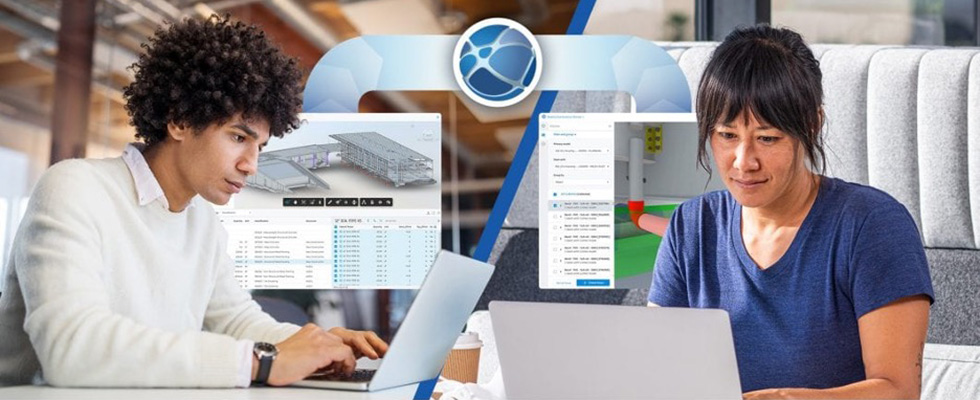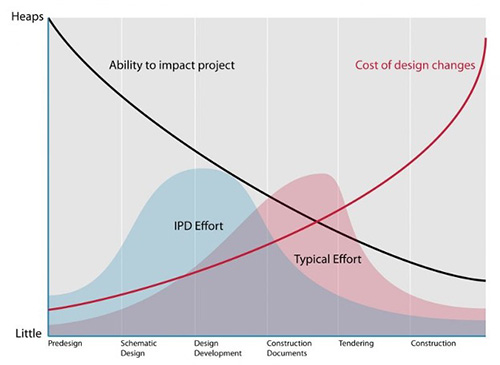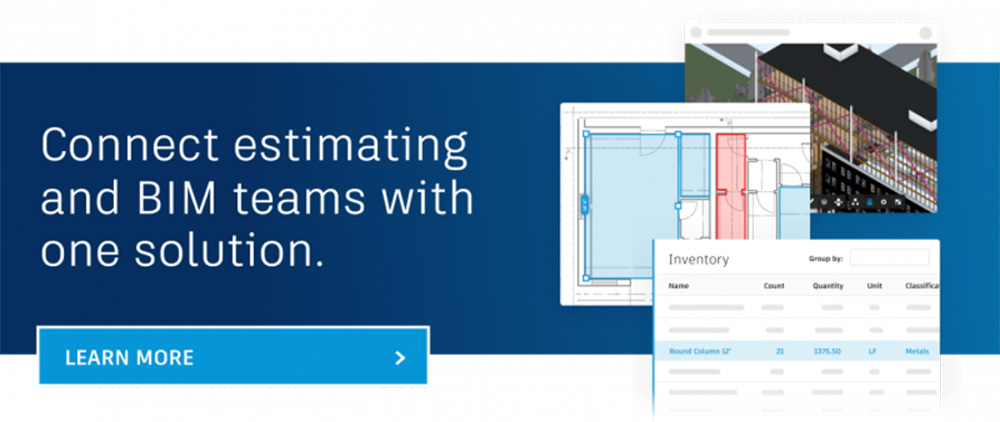
What exactly determines the success of each construction project? Certainly, projects aren’t declared a success simply because they’ve hit the finish line. Each milestone or phase — from design to plan to build — requires many data handover cycles, increasing opportunities for rework. Staying on budget and on time while producing quality work is of utmost importance to all builders — but not all projects are created equally. At the end of the day, all construction firms want to stay in business, and preferably thriving over just surviving.
For example, if each clash costs $3,500 per instance (PWC, 2018), it’s difficult for estimators and project managers to ensure each project is profitable during the planning phases of a project. Whether virtual design and construction (VDC) managers rework designs with architects to ensure the client’s vision is constructible, or project managers collaborate with superintendents to ensure the most up-to-date documents are available to manage field teams and the quality of their construction, there is risk of losing profit margins.
 The MacLeamy curve
The MacLeamy curveThe MacLeamy curve in Image 2 highlights that the further along a construction project is, the more difficult and costly changes become. It’s truly during the planning stage of any project where builders have the opportunity to reduce rework and avoid lost costs. Image 2 illustrates the cost of a project increases exponentially when changes are made to designs throughout the course of construction.
Introducing Autodesk BIM Collaborate & Autodesk Takeoff
Connecting preconstruction teams involves integrating workflows and project data. This enables teams to recover margins when rework is reduced and improve the quality of construction models — all before breaking ground. But to enable connected teams to stay within budget and on time, general contractors and trades need efficient, accurate and collaborative ways to coordinate models and produce accurate estimates with robust quantification tools.
Autodesk has officially rolled out two products that will help construction professionals do just that.
First is Autodesk Takeoff, a brand new 2D and 3D quantification solution that enables estimators to quickly produce accurate quantities for improved estimating and competitive bidding.
Next is Autodesk BIM Collaborate, a cloud-based solution that combines design collaboration and coordination in a single solution. VDC managers and other building information modeling (BIM) experts can align and execute on design intent and constructability — with model reviews and markups, automatic clash detection, integrated issue management, and design change analysis.
Both products are part of the Autodesk Construction Cloud unified platform, built on a common data environment (CDE) that helps teams coordinate from design to plan to build, while staying connected to the same construction documents.
The following offers a closer look at why these products were built and how connected preconstruction workflows can help you achieve better outcomes in your projects.
One Platform. One Single Source of Truth.
Construction projects require multiple stakeholders to work together in order to achieve a winning outcome. It’s practically a team sport, and members need to be on the same page when analyzing data and making decisions.
This can be a tall order, especially when you have dozens of construction companies working off the same project files.
To truly function as a unit, construction teams need a CDE — i.e., a unified architecture — that allows stakeholders to access the same data and information. A CDE provides a single source of truth that users can rely on, and team members can reduce costly errors knowing that they are working from the right information at the right time. Autodesk Construction Cloud’s CDE empowers teams to remain on the same page when planning and forecasting a project.
In Autodesk Takeoff and BIM Collaborate, drawings, models and documents are stored and collected in one system — Autodesk Docs — which means you can manage everything from a single platform and manage how the rest of the project team access the information.
Enhancing Collaboration Upfront
Autodesk Takeoff and BIM Collaborate were designed to not only enhance how teams stay connected during the planning phase of construction, but also to facilitate how construction teams can reap the benefits of these collaborations. Autodesk knows that by helping professionals work better together during preconstruction, teams can significantly minimize rework on the jobsite — a major expense that cost the construction industry $65 million or 5% of total spend in 2018.
Here are some of the ways that these new products can reduce overall rework.
- Collaboration With Autodesk Takeoff
Autodesk Takeoff breaks down data silos between estimators, improving collaboration by facilitating access to relevant documents, drawings and models to assigned team members. Estimators can access drawing and model-based quantification workflows on a centralized platform and quickly identify the latest versions, improving the quality of takeoffs and overall project transparency. Because Autodesk Takeoff leverages Autodesk Construction Cloud’s CDE, estimators and project managers can confidently know they are working with the most up-to-date information.
- Collaboration With Autodesk BIM Collaborate
For the first time, Autodesk is combining design collaboration and coordination capabilities into a single solution with Autodesk BIM Collaborate. Once VDC managers perform clashes and identify issues in the Model Coordination module, they can easily review the status of model changes made by architects and designers in the Design Collaboration tool. This is especially helpful for self-performing general contractors and bid-build projects. Empowering VDC managers to have visibility into the design review process ensures models are truly constructible, sooner.
Together, these products can help ensure that projects stay on track. They improve collaboration and ultimately reduce unnecessary errors, delays and costs.
- Automating Team Productivity
Schedule overruns come with the territory in construction, and this is often due to teams relying on manual processes, diminishing productivity, and exposing the project to unnecessary risk. Automation can eliminate a large portion of this manual work. A survey by Smartsheet found that nearly 70% of workers say the biggest opportunity of automation lies in reducing time wasted on repetitive work. In terms of which tasks should be automated, Smartsheet’s research found that workers are eager to automate data collection, approvals and updates.
With Autodesk’s new products, you can add data, run calculations (standard or custom), and perform reviews automatically while allowing BIM and estimating experts to stay in control of final results.
Autodesk BIM Collaborate and Autodesk Takeoff enable these experts to save time with automatic clash detection and by quickly generating detailed quantities.
- Automation With Autodesk Takeoff
Autodesk Takeoff can automate quantification workflows by enabling you to quickly access quantities from BIM models. Using the solution, you can perform linear, count, or area takeoff with multiple quantities output and use custom formulas to generate complex quantities. Easily move existing takeoff to newer versions of the drawings without the need to perform the takeoff again. You’ll also save time and drastically increase project scope visualization by instantly accessing quantities from the 3D model.
- Automation With Autodesk BIM Collaborate
Autodesk BIM Collaborate features automated clash detection and enhancement to Navisworks robust clash detection capabilities. When coordinating models, the solution automatically groups clashes by object type and system, enabling VDC managers to skip a traditionally manual process. Simply upload models, and the system will identify clashes without needing to condition the model.
With advanced automation for clash detection, design and trade teams can self-check their work more effectively and improve the quality of construction documents. Perhaps most importantly, Autodesk BIM Collaborate empowers the VDC lead to strategically focus on the most important constructability issues rather than getting bogged down in resolving minor clashes.
Letting Your Data Work Smarter, Not Harder
Not collecting and leveraging historical data for the success of both your projects and overall business is detrimental. Data trends empower decision-makers with insights to make the right decisions and help teams optimize for future projects. Research by Autodesk and FMI found that poor project data and miscommunication cause 52% of rework. If we know that teams can reduce rework by understanding historical outcomes, and rework is the “archnemesis” of a project’s profitability, then it’s clear that effective digital technology must demonstrate through easy reporting how decision-makers can facilitate planning.
Autodesk’s new product offerings help builders get the most out of data and real-time information in a number of ways.
- Insights With Autodesk Takeoff
Autodesk Takeoff makes it easy to visualize project scope with aggregated 2D and 3D takeoffs. Takeoff types can be used across both 2D and 3D quantification workflows, allowing estimators to leverage aggregated quantities from plans and models in an organized, customizable view. Teams can visualize project scope from detailed 3D takeoffs to identify gaps to help produce accurate costs and estimates.
- Insights With Autodesk BIM Collaborate
Autodesk BIM Collaborate lets you visualize and contextualize design changes by trade, project phase, or building level. VDC managers can explore shared design data before accepting it to understand how new information will impact work in progress.
Experience the New Standard of Preconstruction Today
Improving how you handle the preliminary stages of your construction projects will set you up for success on site. That’s why it’s important to invest in tools that can up-level your processes and teams as they navigate the early stages of the project.
With Autodesk Takeoff and Autodesk BIM Collaborate, you can experience the new standard of preconstruction today. Learn more today.


